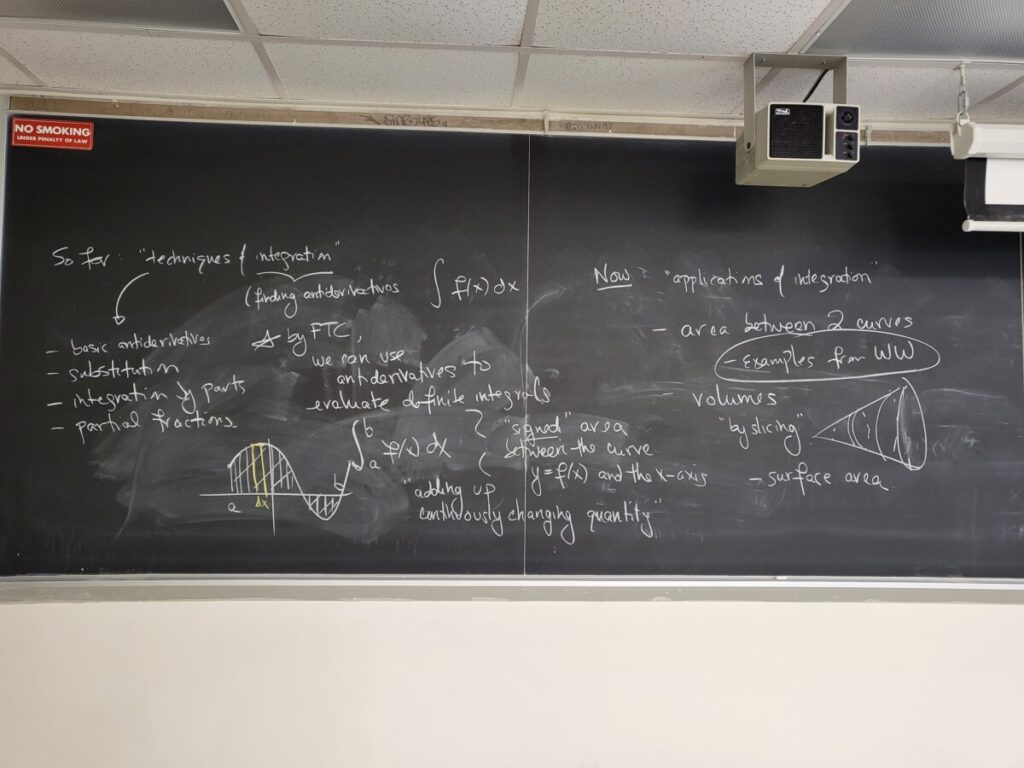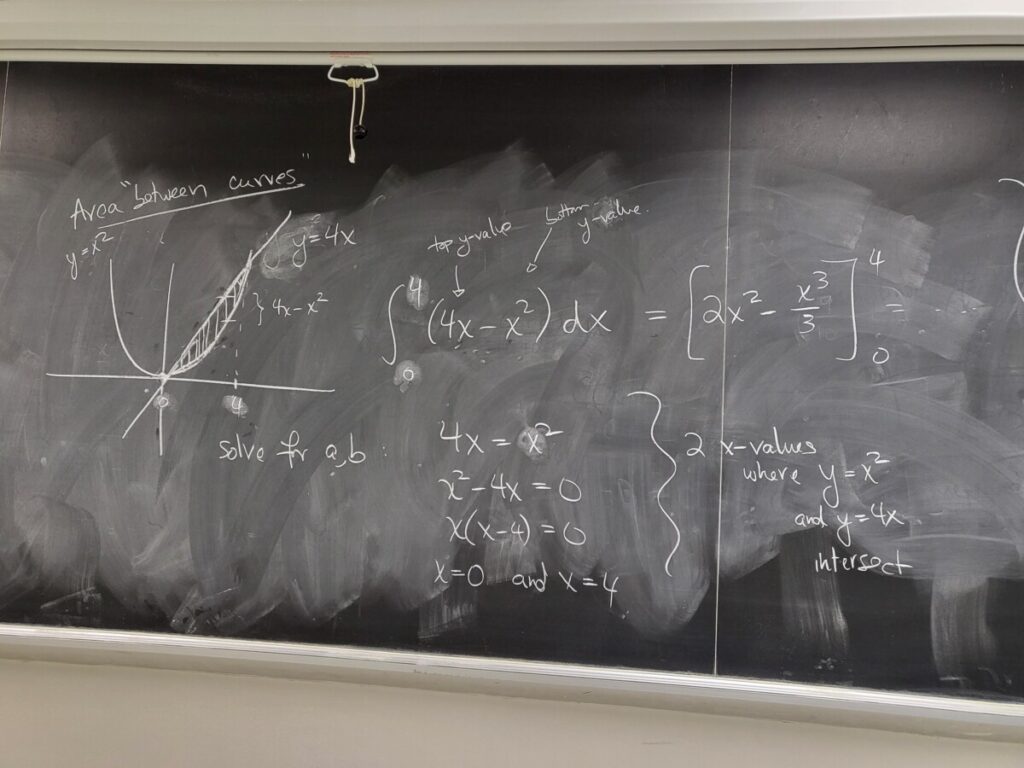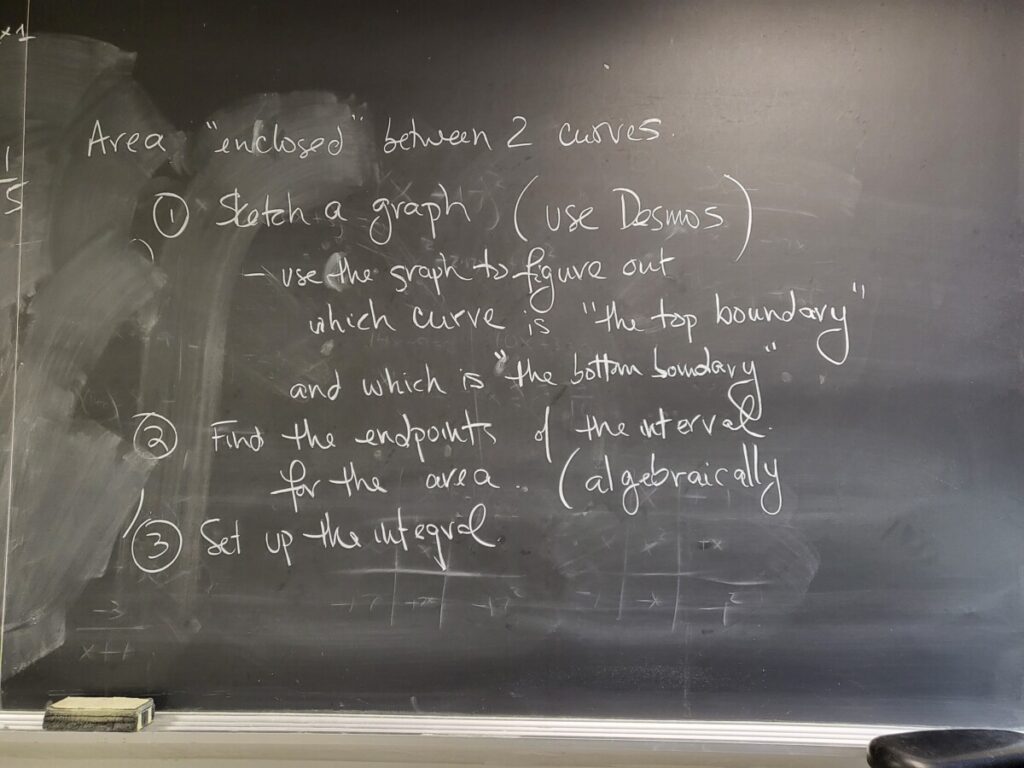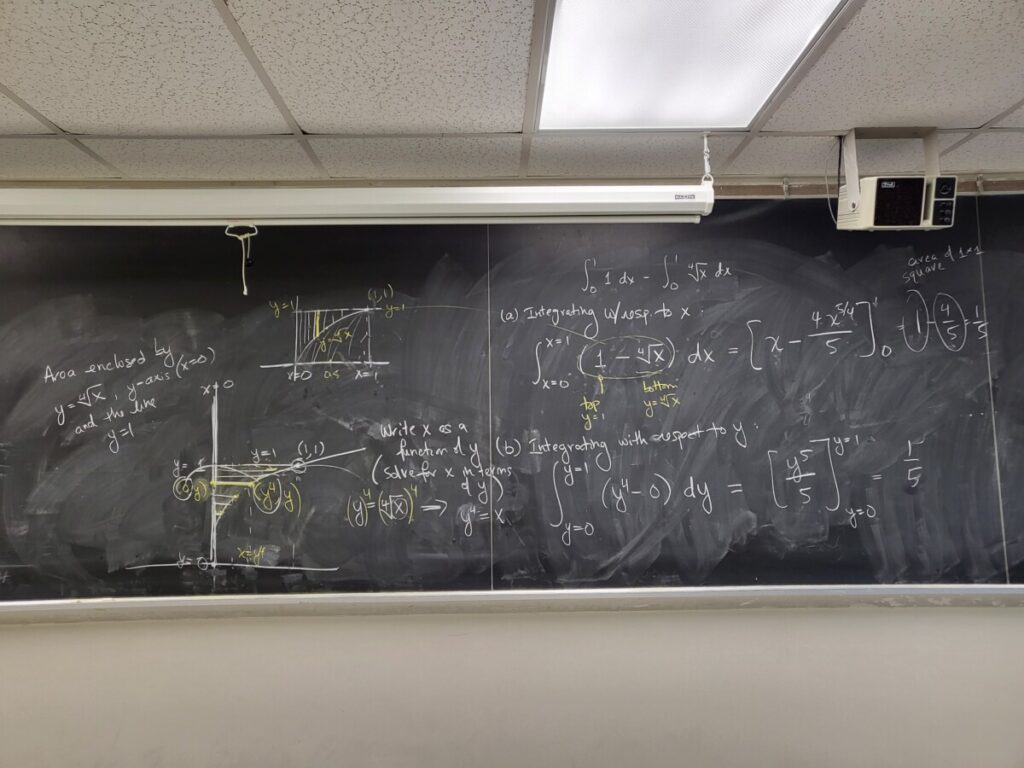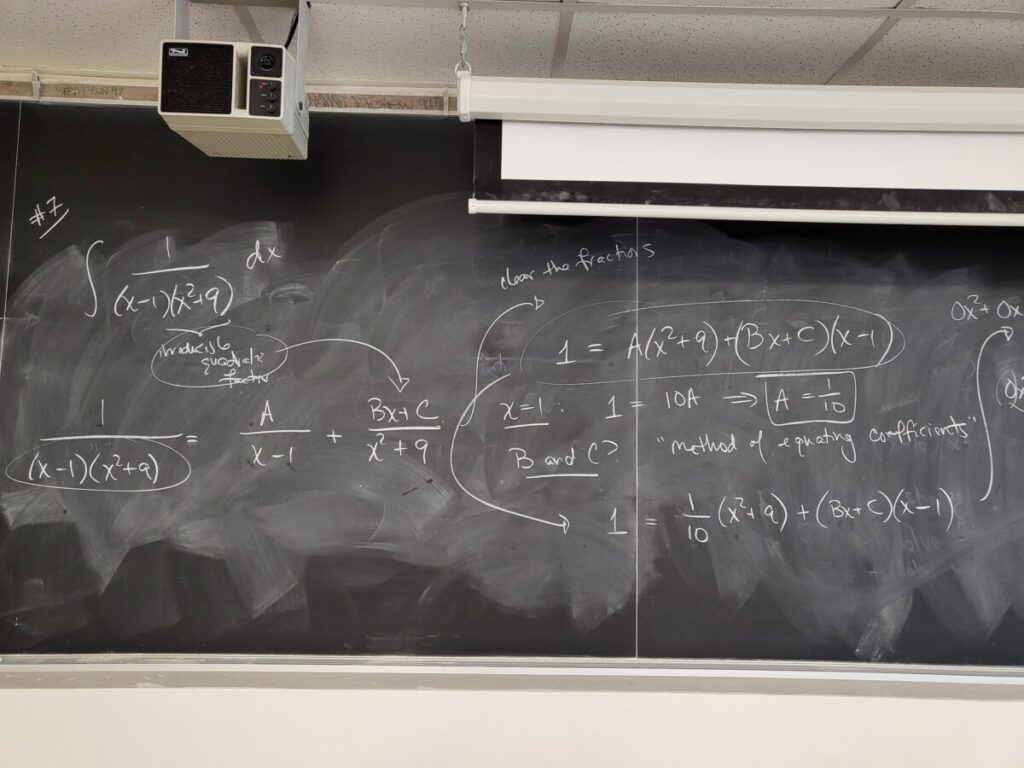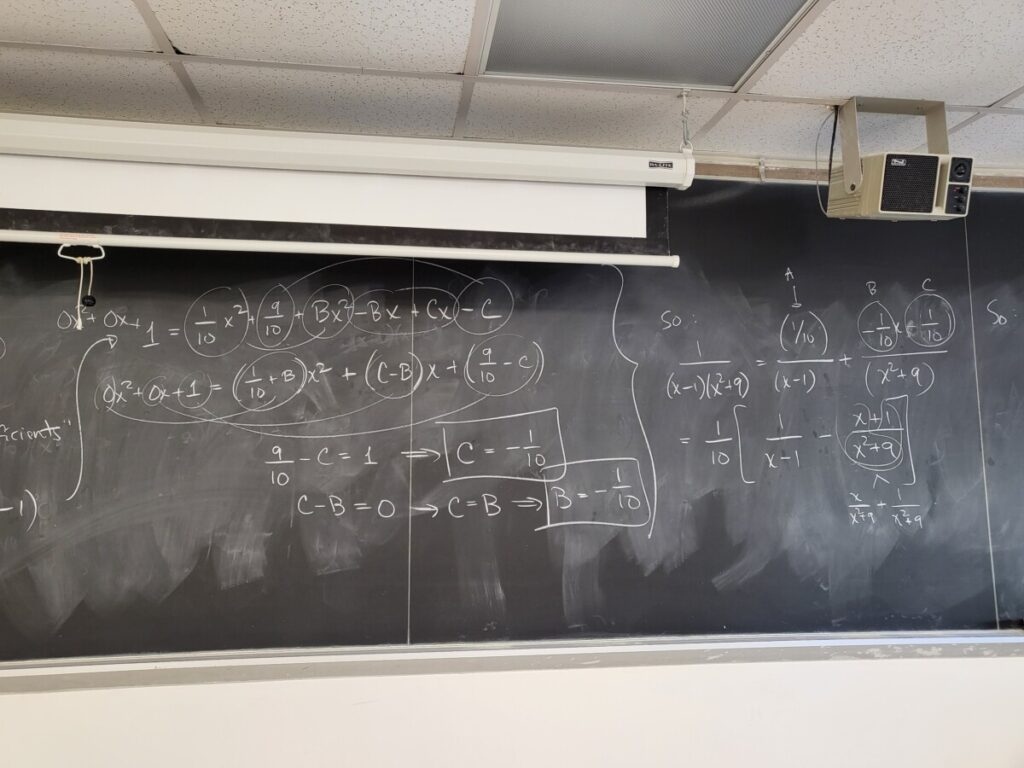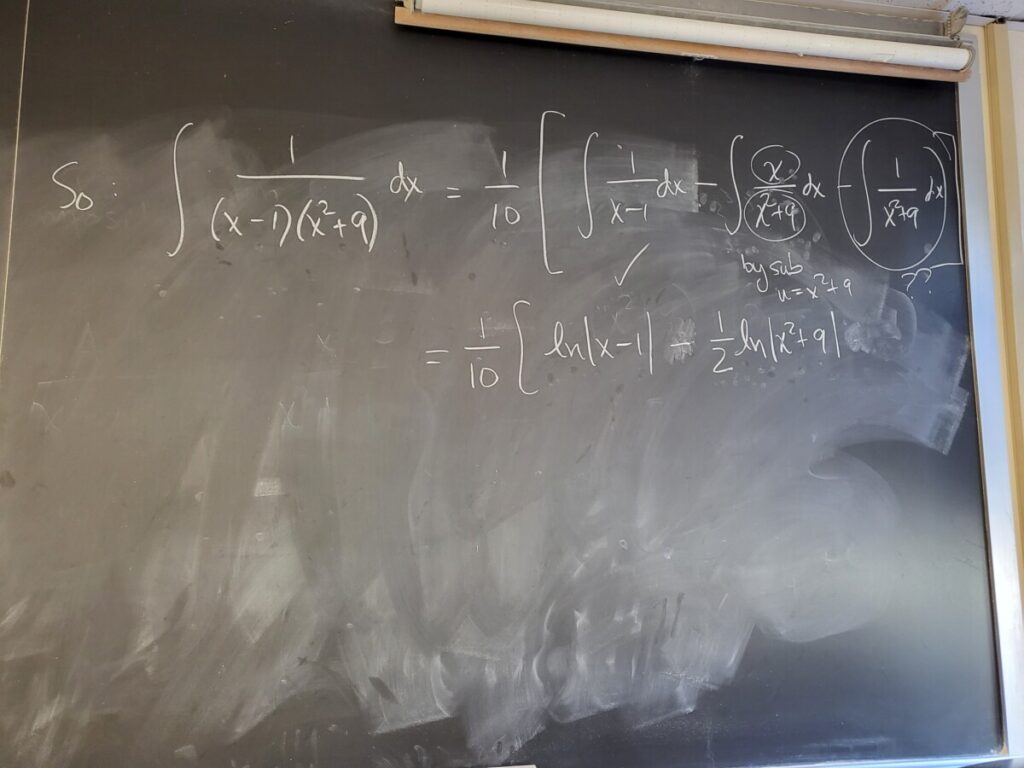Class Info
- Date: Mon Oct 30
- Meeting Info: 10a-11:40a, N719
Announcements
WebWork:
- finish “Integration – Partial Fractions” (due tonight – Mon Oct 30)
- “Applications – Areas Between Curves” (due Fri Nov 3)
- “Applications – Volumes of Revolution” (due Nov 8)
Topics
We went through some examples of computing “volumes by slicing” (covered in Sec 2.2 of the textbook) which also called “the disk method”–since we form the definite integral for the volume by picturing the object “sliced” into thin disks.
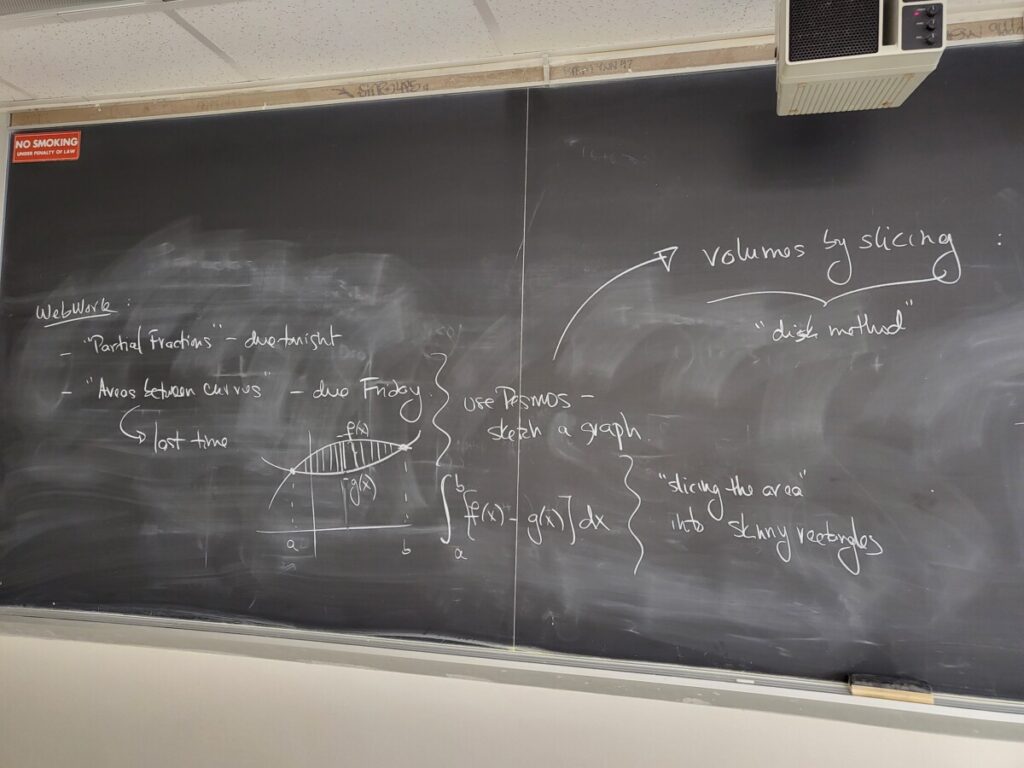
We first calculated the volume of a cylinder and the volume of a cone using this method. In the first case, the “cross-sectional” area is a constant; for a cone, the cross-sectional area is a circle whose radius is a linear function of x:
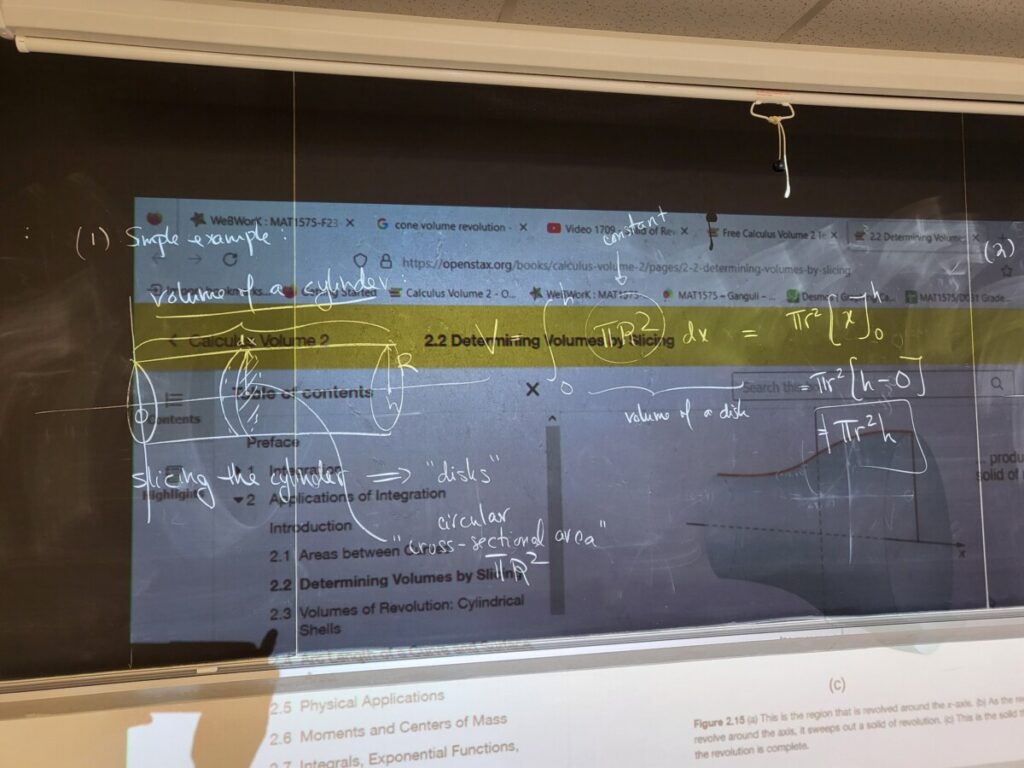
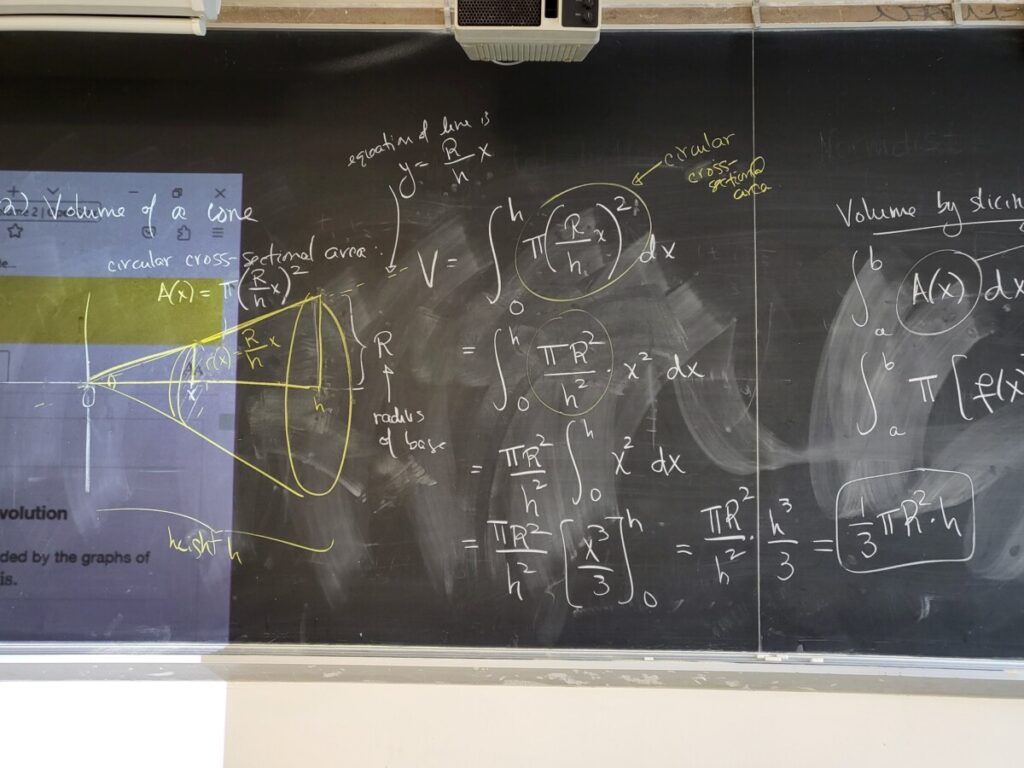
This leads to the general form of the definite integral for calculating a volume by slicing, in terms of the cross-sectional area; and the particular form of that for a “solid of revolution”:
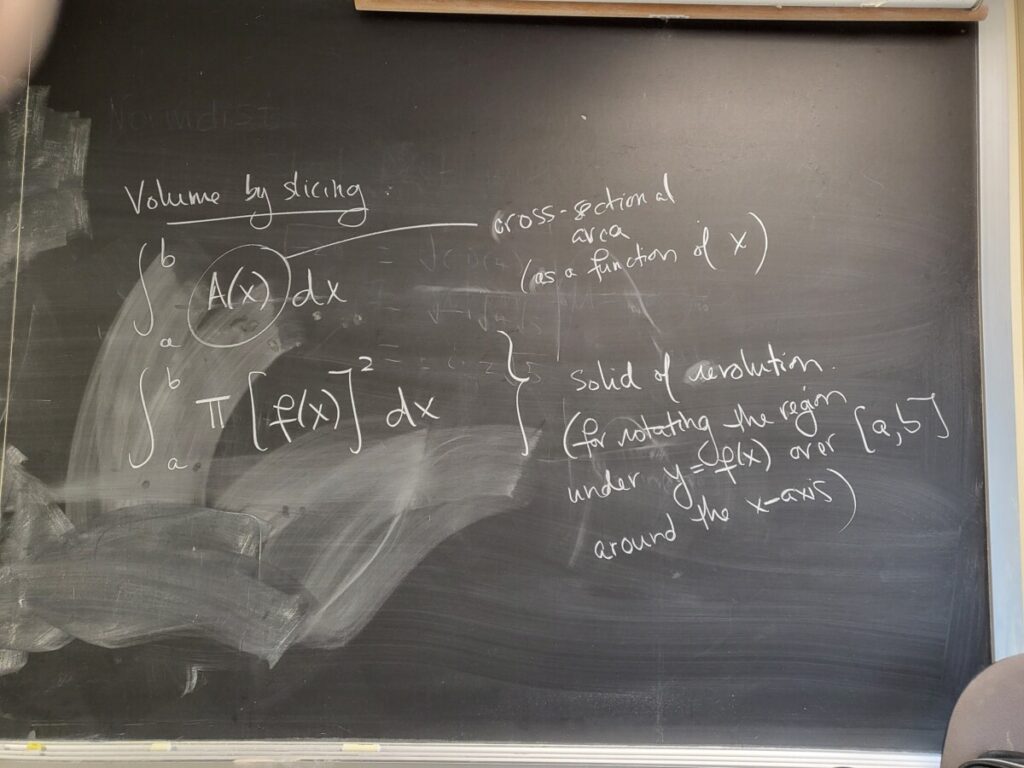
We set up Example 2.7 from Sec 2.2 of the textbook:

We then went through the first few exercises from the “Applications – Volumes of Revolution” WebWork set. Here is #3:
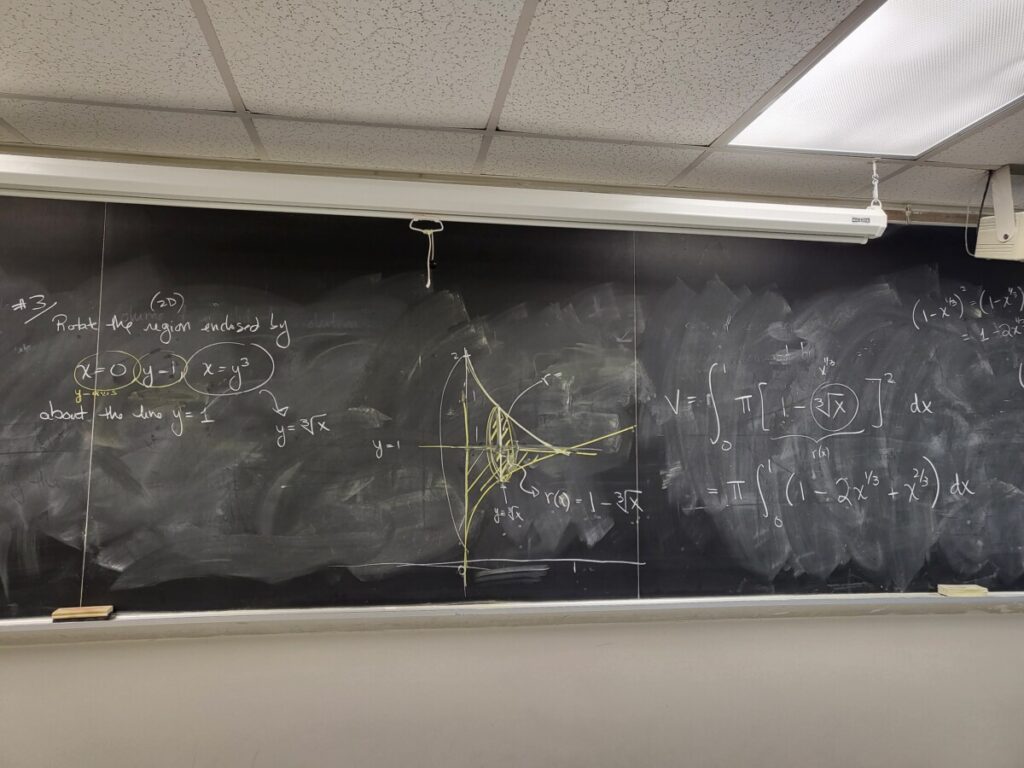
Here is a video that illustrates the disk method, and a variation called “the washer method”:
Some of the subsequent exercises in that WebWork set use a different technique for computing volumes, called “cylindrical shells.” We will discuss that topic on Wednesday.
